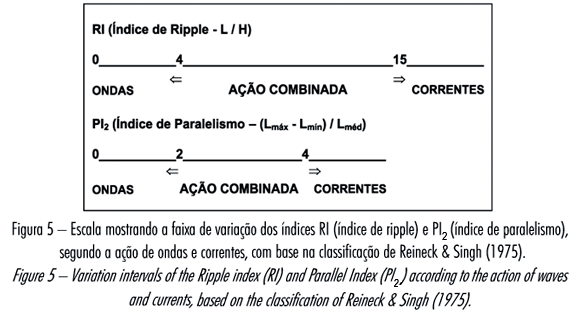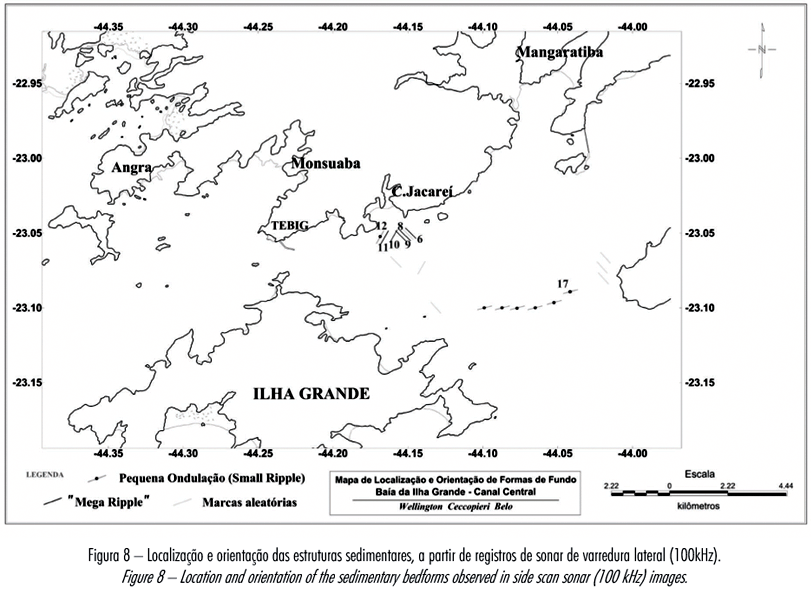Based on high-resolution seismic data (sub-bottom profiler 7,0kHz and side scan sonar 100kHz) and geological bottom samples, interesting aspects of the Ilha Grande bay seabed were investigated. The seabed along the eastern-central channel of the bay was characterized by eight bottom sedimentary patterns. Such patterns showed variations in the texture, in the bio-debris content and in the acoustic back-scattering of the sediments. Observed evidences of modern facies transitions from sub-environments dominated by higher energy agents (waves) to facies dominated by lower energy agents (tides, bottom currents) were related to the complex submarine topography and to the coast line orientation. The boundary geometry among the ecofacies also suggests a hydrodynamic control by wave action and bottom currents. Evidences of these combined effects of waves and currents were approached based on the observed bedforms. Such sedimentary structures are predominantly "mega ripples" located in depths around 16 m, nearby Conceição de Jacareí. There is a textural transition of the bottom sedimentary patterns from westward to eastward. Their crests are NE-SW and ESE-WNW oriented and plenty variable in the form (straight line, wavy, forked, discontinuous). Their heights ranged from 0.2 to 0.55 m with medium value around 0.35 m. Based on the bedform parameters (wavelength and height) and by using diagrams relating the medium diameter of the grains, to the depth and to the type of the structure, the speed of the flow up to 1,0 meter from the bottom (U100) was estimated. It varied from 46 cm/s (medium sands) to 34 cm/s (very fine sands) - from eastward to westward. The medium speed of the stationary flow (U), differently, varied from 54 cm/s to 64 cm/s, respectively. Four studies concerning to wave action indicated that high-energy waves usually observed in the area can contribute to the genesis of the observed bedforms being a good evidence that they could be active. Besides, they could be subject to changes on their geometry along the year. The bottom in this area would be mobile during these events with speed of the oscillatory flows around 50 cm/s. Upon sporadic events of higher energy (~ 80 cm/s), mainly in the winter, there would be larger readiness of sediment for the bottom transport by currents. Therefore, all these observed characteristics of the eastern-central channel seabed of the bay indicate that waves and currents may act on the sediments sorting by an interplay to the geometry of the bay characterizing different bottom types. The resulting oscillations on the level of energy also can contribute to the bedforms generation, based on sporadic higher energy events.
high-resolution seismic; ecofacies; bedforms; estimate velocities; Ilha Grande bay













